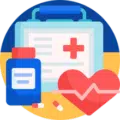Author(s)
Michael Kachmarsky, PharmD, BCACP
Daniel S. Longyhore, PharmD, MS, BCACP
Reviewed By
Jordan Ballou, Pharm.D., BCACP
Cody Clifton, Pharm.D.
Bernard K, Cowles B, McCall K, et al. Impact of medication synchronization programs on proportion of days covered (PDC) scores and Medicare Part D medication-related adherence metrics. J Am Pharm Assoc 2019; 59: 343-48.
The Problem:
The phrase “silent killer” is often connected to common asymptomatic conditions like hypertension. However, what if there was a bigger issue. Not the disease itself, but how it is being managed. The “silent killer” that impacts every ambulatory care practice is medication non-adherence. Today, it’s estimated that medication non-adherence results in 125,000 preventable deaths every year and $300 billion in avoidable healthcare costs.1 Deaths from medication non-adherence are nearly 10 times more common than homicides … and yet you don’t hear much about it on the nightly news. It is no surprise that pharmacists have an important roll to play tackling this critical issue.
What’s Known:
In the recent past, many pharmacies used late to refill (LTR) reminder calls to improve medication adherence. One study found that LTR reminder calls increased adherence for Medicare Part D patients and might have the potential to reduce hospitalization rates and health care costs.2 This study analyzed proportion of days covered (PDC) as the primary outcome to measure changes in compliance. With the apparent success of LTR, many pharmacies have now implemented medication synchronization or med sync programs to proactively address medication adherence. While some have called med sync a “golden ticket”, research is clearly needed to determine its benefits and value.
Programs involving some form of medication synchronization are being heavily promoted to local community pharmacies. Medication synchronization is designed to “help a pharmacy streamline its workflow by synchronizing client medication schedules, resulting in a single pick up date and better medication adherence.”3 Under such programs, pharmacies proactively reach out to patients prior to refills being due and filling their chronic medications to be ready for pick up on a pre-determined date. In addition, out-of-stock medications can be identified in advance and the pharmacist can work with prescribers to come up with alternatives if there is a drug shortage. Patients avoid multiple trips to the pharmacy and long wait times. Another incentive for pharmacies to implement a med sync program – Medicare star ratings!
Med sync programs often focus on improving adherence to medications, such as statins, renin-angiotensin-aldosterone system antagonists and diabetes medications, because these medication classes are linked to the CMS star ratings. Higher star ratings result in increased revenue for the drug plan. If a pharmacy is performing well with these CMS adherence measures, it might be designated a “preferred pharmacy” in the network. Likewise, poor performance on these adherence measures can lead to a pharmacy being excluded from the insurance’s network. Therefore, pharmacies have financial incentives to implement med sync programs to sustain their growth and revenue.
What’s New:
In a recent retrospective cohort study, investigators examined the benefits of med sync programs by analyzed prescription drug claims data from a Medicare Advantage Plan from 2015 to 2017.4 The primary outcome measure of the study was the proportion of days covered (PDC) for three of the most common medication classes: statins, renin-angiotensin-aldosterone system antagonists (RASA) and noninsulin diabetes medications. The PDC is a commonly used adherence measurement based on days’ supply and fill dates. Patients were separated into two cohorts: patients enrolled in a med sync program and patients who were not. Data from approximately 2400 patients were analyzed. In addition to comparing the change in proportion of days covered (PDC) score for each of the key medication classes in each cohort, secondary endpoints included the percentage of patients with a PDC score of at least 85% and changes in pharmacy and medical costs.
Table 1: Key Study Findings
|
Variable |
RASA |
Noninsulin diabetes medications |
Statins |
|
PDC 2015 (%) |
Control- 95.0 Sync- 94.3 |
Control- 94.5 Sync- 92.9 |
Control- 94.0 Sync- 93.9 |
|
PDC 2017 (%) |
Control- 94.6 Sync- 95.9 |
Control- 95.0 Sync- 97.7 |
Control- 94.5 Sync- 96.8 |
|
PDC score Change (%) |
Control- – 0.4 Sync- + 1.6 |
Control- + 0.5 Sync- + 4.8 |
Control- + 1.3 Sync – + 2.9 |
|
p value |
0.005 |
0.01 |
< 0.001 |
There was a statistically significant increase in PDC scores among all three of the medication classes for those patients enrolled in a med sync program. There was also an increase in the proportion of patients that reached the 2019 CMS Star rating adherence threshold of 80% (93% control group vs 95.5% Med sync). For the secondary cost outcome, there was a non-statistically significant increase in costs (both medical and pharmacy) among patients in 2 of the 3 med sync groups.
Table 2: Secondary Outcome – Total Cost of Care
|
Variable |
RASA |
Noninsulin diabetes |
Statins |
|
2015 ($) |
Control- $4481 Sync- $5817 |
Control- $4692 Sync- $5853 |
Control- $5000 Sync- $4891 |
|
2017 ($) |
Control- $5242 Sync- $6249 |
Control- $4860 Sync- $7492 |
Control- $5003 Sync- $5587 |
|
Change 2015- 2017 ($) |
Control- $761 Sync- $432 |
Control- $162 Sync- $1639 |
Control- $3 Sync- $696 |
|
p value |
0.53 |
0.228 |
0.302 |
The authors conclude med sync appears to increase medication adherence but there was no reduction in costs.
Critical Appraisal:
This study has several weaknesses and limitations, including its retrospective design which cannot account for important variables, is prone to selection bias, and cannot prove causality. The biggest concern is the lack of patient-oriented outcomes. The study focused simply on looking at changes in adherence (based on PDC) and assumed an improvement in PDC will lead to better health outcomes. However, the important outcomes that patients and providers would care about most, such as hospitalization rates, cardiovascular events, and quality-of-life, were not studied. The study also did not link changes in adherence to changes in clinical markers such as blood pressure, A1c, or percentage of patients reaching treatment goals. Thus, more studies measuring these important outcomes are needed.
Another concern raised by this study is the possibility that med sync may increase overall costs, rather than lower them. The authors postulate that patients enrolled in a med sync program may be more health conscious and therefore seek medical attention more regularly. Only a prospective, randomized, controlled trial can determine if this is an important factor.
Lastly, the patients enrolled in this study had very high baseline adherence rates (PDC >90%). These are not the kinds of patients that would most likely benefit from a med sync program. So while adherence rates did improve, the improvements were very modest. It seems intuitive that the benefits of med sync (including perhaps lower costs) would be much greater in poorly compliant patients. But we simply don’t know based on this data.
Med sync is a very phone intensive process and patients may not like the “robo-calls” these programs typically use. Also, when a new medication is added to a regimen and is “out of sync,” the patient may be charged for a short supply of medication to get them through to their scheduled “sync” date.
The Bottom Line:
Med sync is a tool that can help improve patient’s adherence to medications. Although this and other studies have shown that med sync programs can improve measurements of adherence such as the PDC, studies have not (yet) measured clinically important outcomes such as hospitalization rates, morbidity, mortality or changes in surrogate markers such as A1c and blood pressure measurements. Moreover, med sync programs have not (yet) shown a clear financial benefit to the health plan and may in fact be more costly to patients. Thus, it is not clear that med sync program really work to deliver better care or lower cost.
Key Points:
- Today, medication nonadherence leads to about 125,000 preventable deaths and $300 billion in avoidable healthcare costs each year
- Med sync programs improve PDC scores but it is not clear if they impact clinically important outcomes
- Med sync programs have not (yet) been shown to have positive financial benefits aside from higher reimbursement rates due to higher CMS star ratings
- More research is needed before med sync programs can be recommended to patients
FINAL NOTE: This program will be available for recertification credit through the American Pharmacists Association (APhA) Ambulatory Care Review and Recertification Program. To learn more, visit https://www.pharmacist.com/ambulatory-care-review-and-recertification-activities.
- 15 Frightening Stats on Medication Adherence (Plus Infographic). https://www.pillsy.com/articles/medication-adherence-stats Accessed July 07, 2019.
- Your Adherence and Financial Solution – MedSync. https://medsync.ca/ Accessed July 07, 2019.
- Taitel MS, Mu Y, Gooptu A. Impact of late-to-refill reminder calls on medication adherence in the Medicare Part D population: Evaluation of a randomized controlled study. Patient Prefer Adherence 2017; 11: 373-79. Available from https://www.ncbi.nlm.nih.gov/pmc/articles/PMC5338963/
- Bernard K, Cowles B, McCall K, et al. Impact of medication synchronization programs on proportion of days covered (PDC) scores and Medicare Part D medication-related adherence metrics. J Am Pharm Assoc 2019; 59: 343-48.





 iForumRx.org is a web-based community of practice designed to inform ambulatory care pharmacy specialists, pharmacy residents, and student pharmacists about high-quality, practice-changing evidence.
iForumRx.org is a web-based community of practice designed to inform ambulatory care pharmacy specialists, pharmacy residents, and student pharmacists about high-quality, practice-changing evidence.